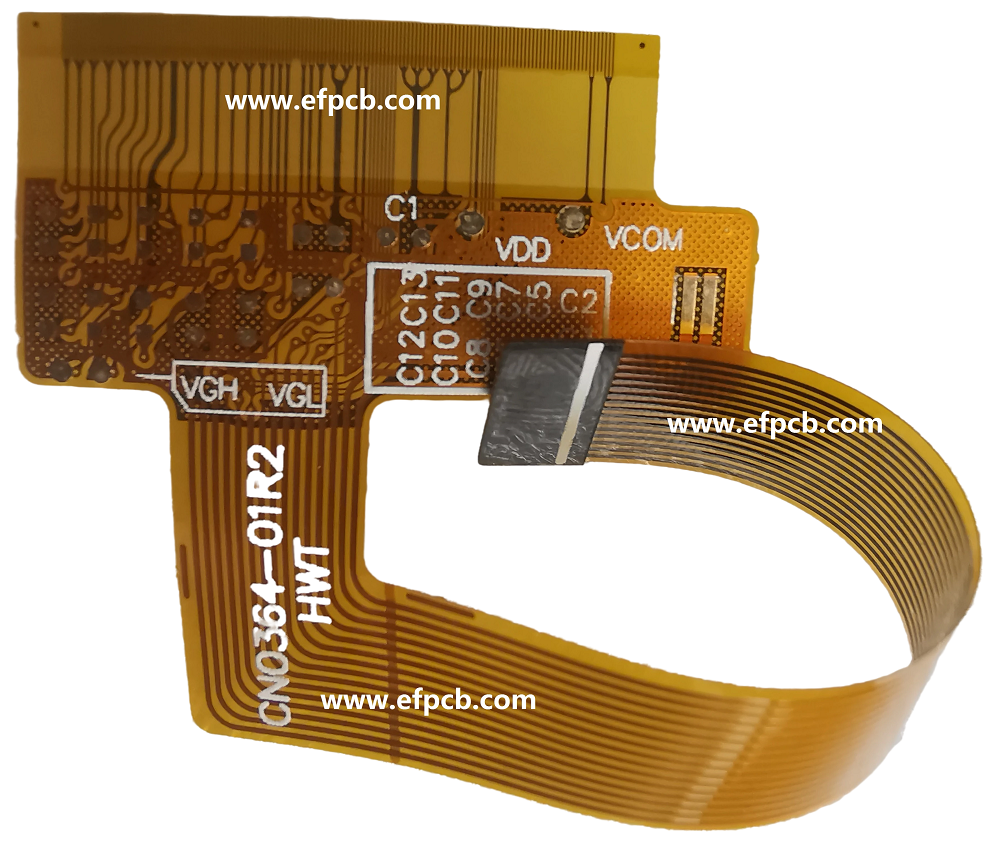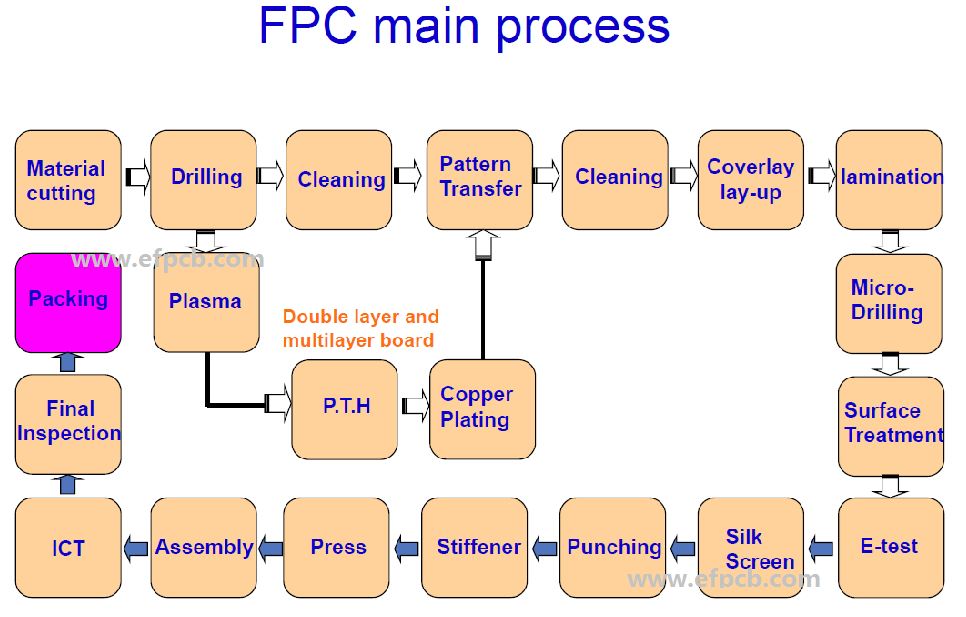Peep Into the Manufacturing, Types and Significance of Flexible PCBs
 The PCBs have got modified over years to get converted into current sophisticated PCBs. The Flexible PCB is one of them. You can know about this by comparing the PCB installed in 1990s television and the PCB installed in today’s LED version as well as smartphones.
The PCBs have got modified over years to get converted into current sophisticated PCBs. The Flexible PCB is one of them. You can know about this by comparing the PCB installed in 1990s television and the PCB installed in today’s LED version as well as smartphones.
You already know different PCB categories include aluminium circuit boards, double layer, single layer, and rigid, multiple layers, rigid-flex, and flexible. This piece of article throws light on the flexible circuit boards. Peep into it!
What is Flexible PCB?
It is also called flex circuits or flex prints. It can be bent into the required shape as it is a special circuit board type. For high-temperature and high-density applications, they are widely used. Transparent polyester or polyimide film acts as a substrate material in flex designs. The designs are highly resistant to heat making them the correct fit for solder mounting components.
More than two-layered electrically conducting components are present in the polymeric multilayered flexible printed circuit board. Plating through holes is used to interconnect these layers. In addition, three or more flexible electrically conducting layers were present along with the flexible insulating layers between each other. Plating through holes is used to interconnect these layers.
A conductive layer made up of copper traces is found in a flexible circuit that is combined with a layer of polyimide dielectric. From 0.0005’' to 0.05’’, the copper conductive layer thickness can vary. From 0.00035’’ to 0.010’’, the dielectric material thickness can vary. For bonding the conductive layer of copper to the substrate, an adhesive is needed. For attaching the copper with the substrate, vapour deposition is equally handy sometimes.
The selection of material is based on various factors like mechanical resistance, chemical resistance, temperature, current, flexing types, and capacitance. This is why the choice of materials for flexible circuit boards is somewhat tricky.
Being available with fewer interconnections, the flexible designs are quite reliable. This ensures fewer contact crimps and solders joints. Because of their flexible bending capability, less space is needed by these circuits. Unlike the rigid circuit boards, only 10% of the area is covered by them.
Manufacturing Process of Flexible PCB

For manufacturing flexible PCBs, Polyimide is used by the Flexible PCB Manufacturer. This plays the role of a base substrate. Unlike FR-4, this material is expensive. Thus, you must use it cautiously. The technique of nesting is employed to use the polyimide material appropriately. This maintains a close distance between the circuit boards.
The steps of manufacturing flexible boards are as follows:
- Looping
The circuit assembly and servicing length are ensured by the service loop. This is nothing but the extra material amount added beyond the limit of the designer.
- Sizing Conductor
The conductive material in the form of thin copper is installed on the board. The thin copper has a contribution to the flexibility of the circuit. This makes the circuit fit for dynamic applications.
- Etching
For compensating for any isotropic losses during the process of manufacturing, the process of etching is used. In this process, the loss along the line width is double the thickness of copper foil. Various kinds of conductors used, etch mask and the conductor is the factors affecting the line width.
- Routing
Routing is very simple. Folding as well as bending is improved by Routing. Routing also minimizes stress.
- Ground Planes
The board weight is reduced by producing ground planes. This leads to better flexibility of the circuit.
Before applying fillet, holes must be created where the pad area is increased to divide stress. Then adhesive-backed films are added for circuit applications with dynamic flex. Next, before adding photo imaginable film polymers and liquid, an overcoating of screen-printable liquid must be applied. The circuit is saved from any kind of internal or external injury by the polymer plays the role of a solder mask.
Flexible PCB Types
Four various kinds of flexible printed circuit boards are available.
- Single Layer Flexible PCB
As per the name, only one conductive layer is present in the single-layer flexible PCB. This layer sits on the dielectric flexible film. Only one PCB side contains the electric components.
- Multiple Layer Flexible PCB
Three or more conductive layers are present in the multi-layer flexible PCB. A dielectric material separates these layers. High flexibility of the board is ensured by the irregular lamination and the bonding region usually has less lamination thickness.
- Double Layer Flexible PCB
A conductive layer on both the PCB sides is offered by the double-layer flexible PCB offers. This facilitates the connection of the electrical components on either conductive layer side.
- HDI Flexible PCB
The high-density interconnect is the expanded form of HDI. Better layout, construction, and design are exhibited by these circuits. These designs are reliable and efficient in comparison to other boards. Decreased package size and efficient electrical performance are offered by HDI flexible boards. This is possible because of the thin substrate material used in board manufacturing.
- Rigid-Flex PCB
Offering a high density of the component unlike other circuit boards, the rigid-flex PCB contains a blend of both flexible and rigid circuit boards.
Significance of Flexible PCB in the Current Age
You can bend the flexible boards into any shape. This is the reason they are used widely for static and dynamic flexing applications. Regular flexing is used to make the dynamic circuit boards while static applications make use of the circuit boards that offer very little flexing.
You can find the flexible boards coming in handy in different applications. But, they can be used as a replacement for rigid circuit boards. The reason is their cheap price and you can install the rigid boards in applications involving high-volume automated fabrication.
You can find the current electronics devices making use of the flexible printed circuit boards extensively due to their decreased thickness, lightweight, and super flexibility.
For applications demanding regular flexing, high accuracy, better performance, and precision, the flexible circuit boards are perfect. The FPCBs applications areas include:
- Antilock brakes
- Cameras
- Bar code equipment
- Ultrasound probes
- Fuel pumps
- Medical devices
- Semiconductor test
- Satellites
- Motion systems
- Battery packs
- Avionics
- Airbag systems
- Manufacturing devices
Conclusion
This is all about the Flexible PCBs. You might have a better and clear idea about these flexible circuits by now. Hope you found this article helpful!
You can find a reliable and professional Flexible PCB Manufacturer online easily.
- 1HDI PCB Market Outlook 2025: Future Prospects, Growth Analysis & Innovations
- 2Understanding UL 94V-0 Flammability Rating for Printed Circuit Boards (PCBs)
- 3HDI PCB Design Comprehensive Guide: Mastering High Density Interconnect Technology in 2025
- 4PCB core raw material CCL
- 5Top 10 Flexible PCB Factories in 2025
- 6Top HDI PCB Manufacturers (2024)
- 7IC Substrate | Comprehensive Guide (2021)
- 8How to Make mSAP PCB?
- 9Top 10 IC Substrate Fabricators (2024)
- 10The Impact of Trump's Tariff Policy on Chinese PCB Industry and Countermeasures

- Skype ID: shawnwang2006
- Phone No。: +86-755-23724206
- Email: sales@efpcb.com
- Quick Contact
